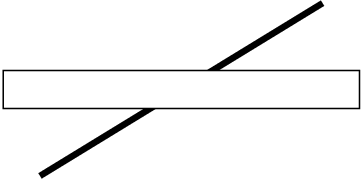Alexa Madoff
Psychology - History & Systems
Professor Mark Berg
Journal Entry #1 - Chapter 14
In Chapter 14, Hunt talks about the psychology of perception and the study of our five senses; sight, hearing, touch, smell, and taste. Throughout centuries of studies, "most philosophers and psychologists have considered perception, at least in human beings, a fundamental psychological function...linking to an external reality, of which we know only what our senses tell us" (Hunt 505). This chapter was very interesting to me because humans use the process of perception every day and makes us
question how our senses can work together with our brain to interpret information. Perception is the process of receiving information and making sense of the world around us. It involves deciding which information to notice, how to categorize this information and how to interpret it within the framework of existing knowledge.
An example..."The red of a ripe apple, for instance, does not exist as red in the apple; what does is a surface that absorbs all visible light except in the region of 650 nanometers wavelength, which it reflects. When the specific radiation reaches the human eye, the brain perceives it as what we call red" (Hunt 508).
 |
| PROCESS OF PERCEPTION |
In order to make sense of our world, our brains try to see patterns or shapes that are recognizable. This is called "grouping". A
key concept to understand is that perception differs from one person to another.
 |
| GROUPING |
There are many illusions that psychologists gathered
information and studied in the past and the present century. Here are several classical illusions...
 |
| The Poggendorff - the angled lines are aligned, not offset from each other |
 |
| The Zollner - the straight lines are parallel to one another |
 |
The Jastrow - they are the same size
|
 |
| The Hering - the heavy lines are perfectly straight |
The topic of perception raises many questions and I find it interesting how many philosophers like Plato and Democritus had different viewpoints on it. The chapter included various examples of illusions relating to perception. As shown above, classical illusions can be seen differently by individuals. Overall, perception is specific to each person and how their brain processes stimuli into information.






Alexa, I found your post to be super informative of chapter 14! The visuals you include help in understanding exactly what you discuss within this post. One thing I find super interesting about this chapter that you have mentioned in your post is that perception is different for everyone. When I learned this I also began to wonder how can we study and learn about something different for everyone? Perception sure is interesting!
ReplyDelete